Merganser Mysteries
Imagine you’re hiking up the river, and swimming against impossible currents, a bird resembling a duck with a mohawk heads upstream with a line of more ducklings than you can count! You’ve been lucky enough to come across a member of a group of waterfowl referred to as the mergansers. Mergansers are known for their serrated bills which enhance their fishing prowess as they dive to catch fish and aquatic invertebrates. However, they are also known for having large broods of young ducklings – but how? and why?
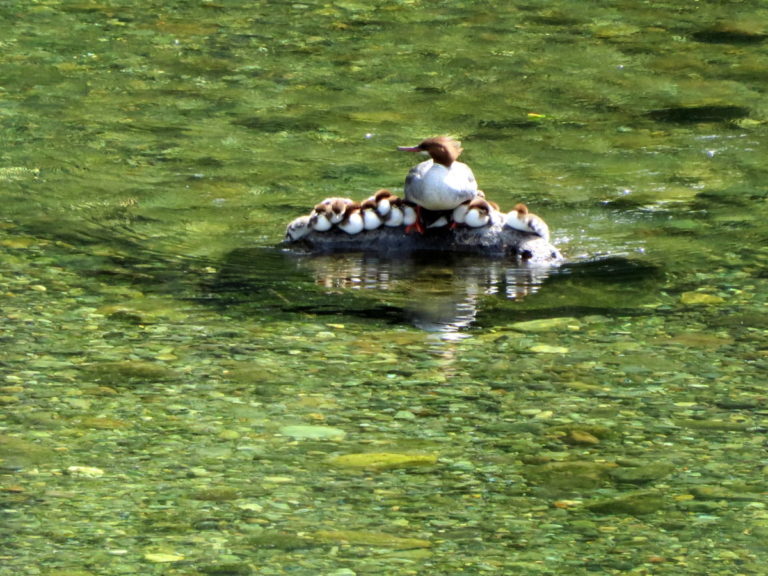
Common Merganser Family by Stephanie Coates
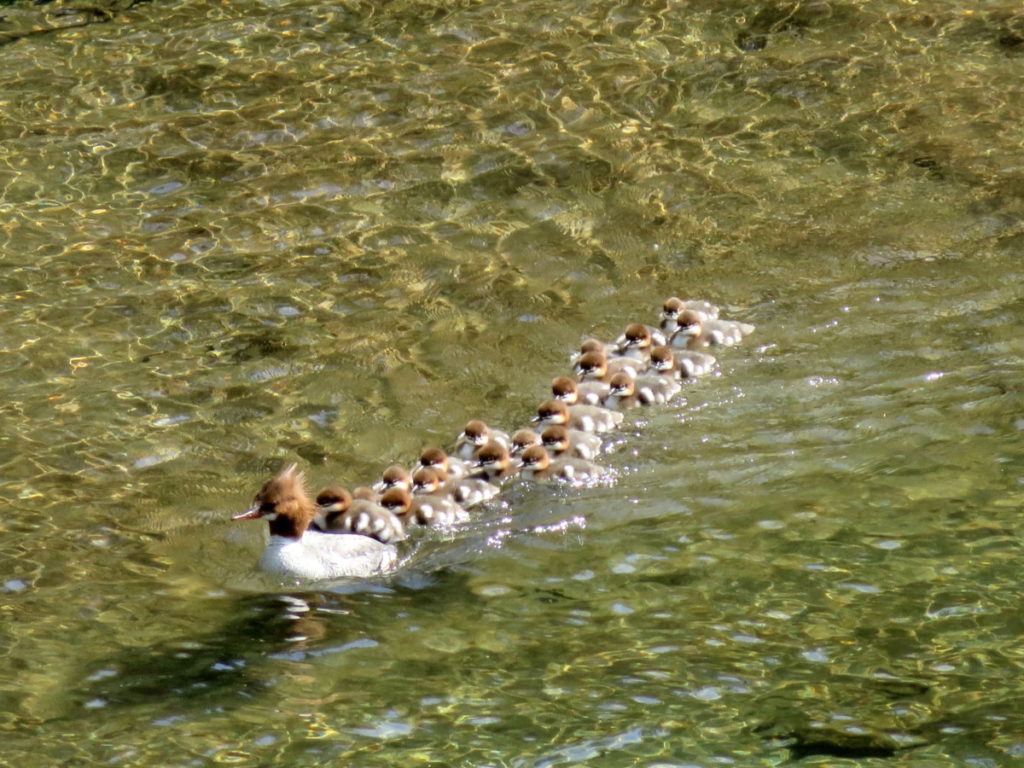
Common Merganser Family by Stephanie Coates
Brood Parasitism
Birds engage in a particularly mischievous behavior called “brood parasitism”. Simply put, brood parasitism occurs when a female lays her eggs in the nest of another. Among mergansers, brood parasitism happens between different species of mergansers, but primarily within species. This risky method of reproducing allows a female to pass on her genes without having to care for and raise her own young.
Common Merganser
Common Mergansers, recognized by the males’ dark green head and red bill and the females’ rusty colored “mohawk” of feathers on the head, are the most commonly seen merganser in the Sierra Nevada, as their name implies. They frequent reservoirs like New Melones where they flock together in the winter, and can be seen along rivers in the summer, where they seek out large trees with cavities to nest in.
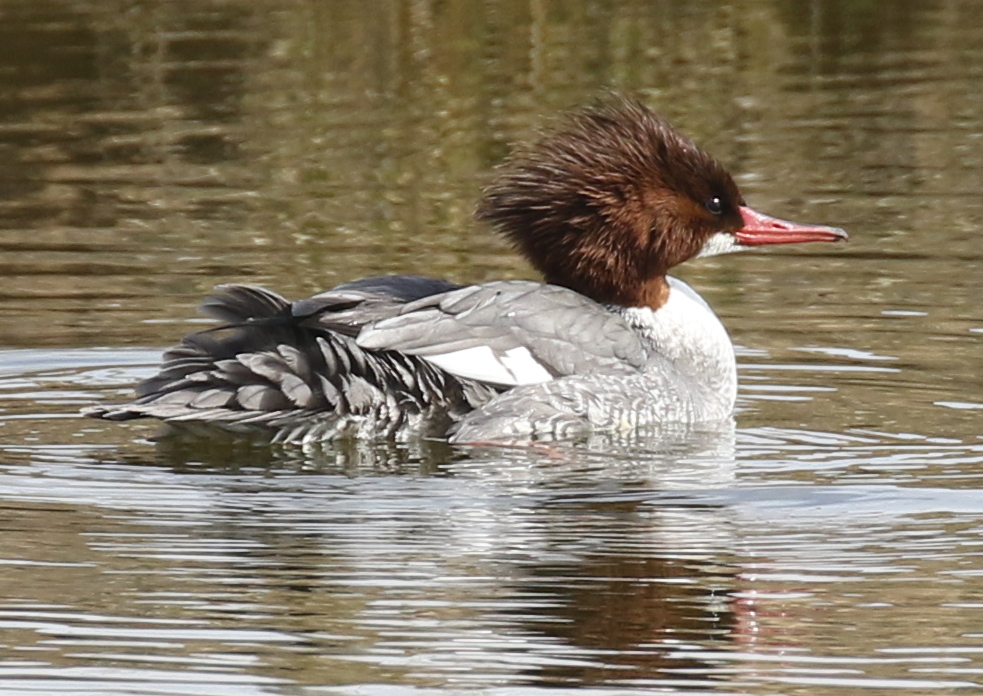
Common Merganser photo by Richard Brown
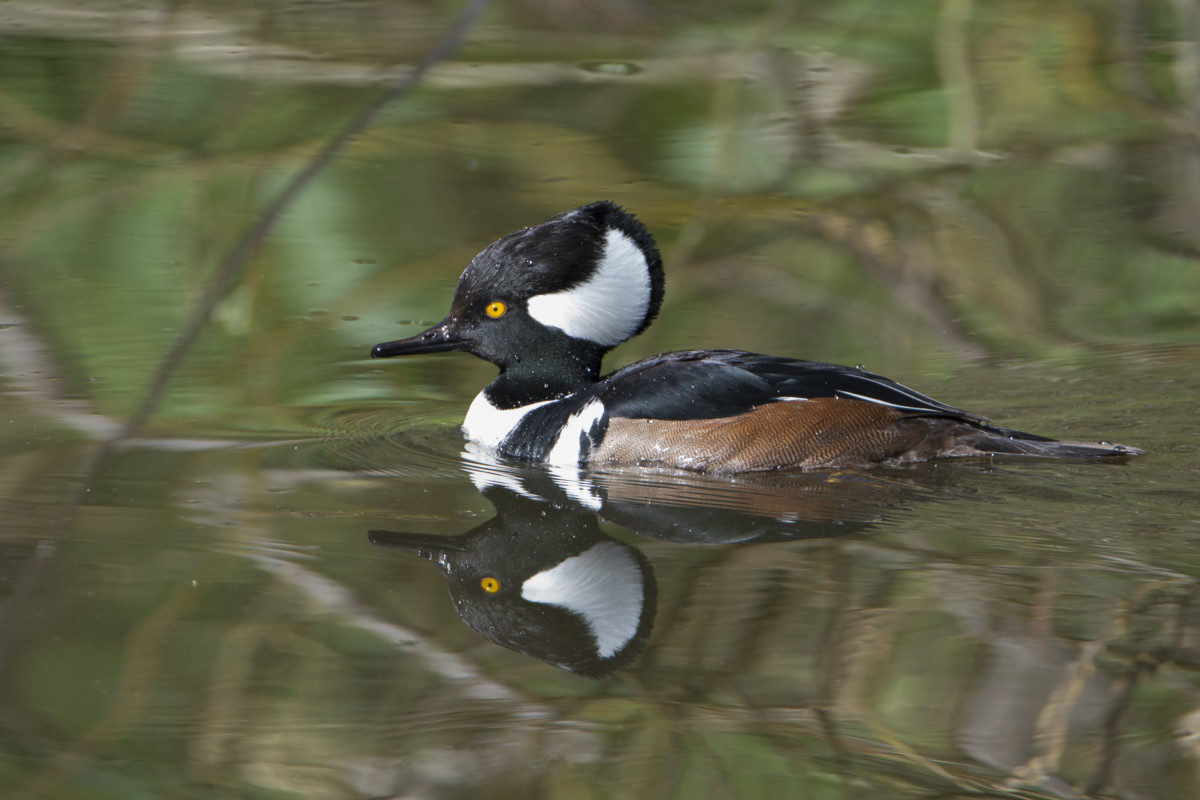
Hooded Merganser photo by Linda Raymer
Hooded Merganser
The more dramatic hooded merganser is aptly named for the males’ large crest with a large white patch bordered in black, and the female’s cinnamon crest. These “hoods” are composed of feathers that can be raised and flattened. They also nest in tree cavities, preferably along freshwater ponds and rivers. In winter, they can be seen in a variety of habitats from marshes to inland bays. Typically a single female hooded merganser can lay up to 13 eggs, but nests are often found with many times that!
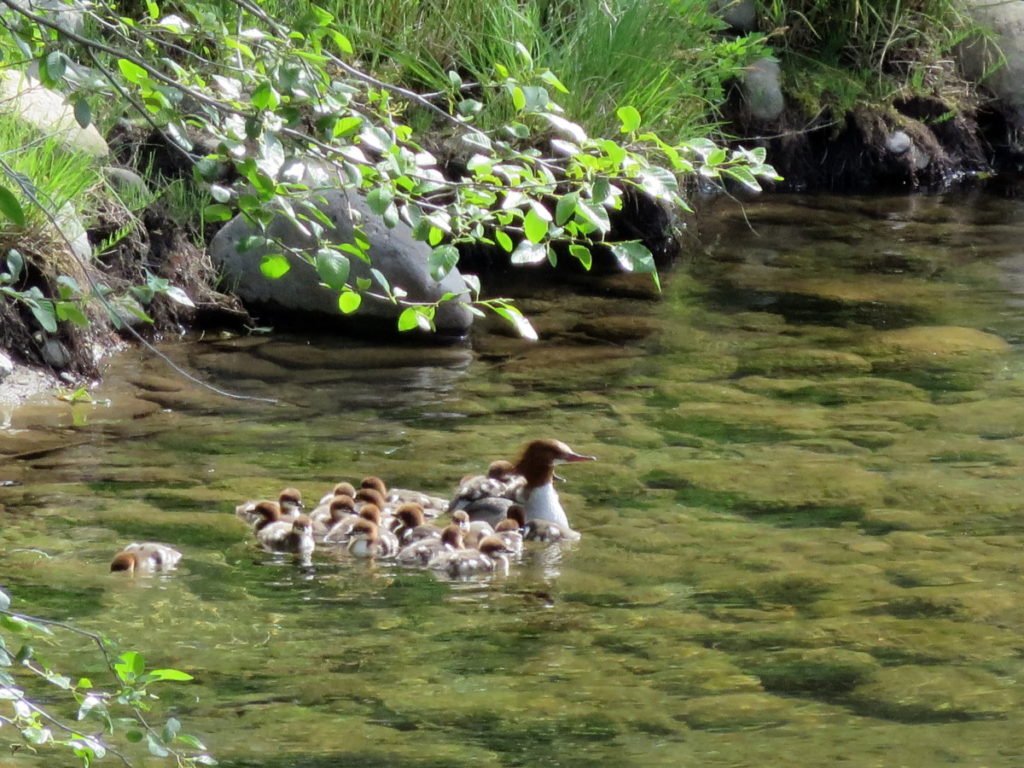
Common Mergansers by Stephanie Coates
In addition to having very large broods of young, merganser’s young depart the nest when they are only one day old! Keep your eyes peeled for these unique and dedicated ducks next time you’re hiking along a river or lake. In addition to their impressive reproductive techniques, they are quite adorable!
Megan, CSERC Blogger

